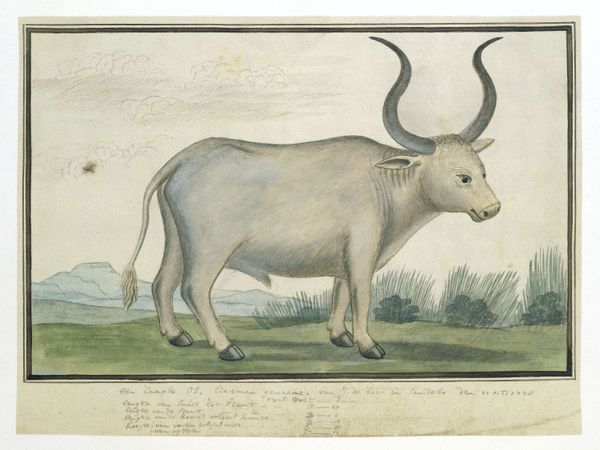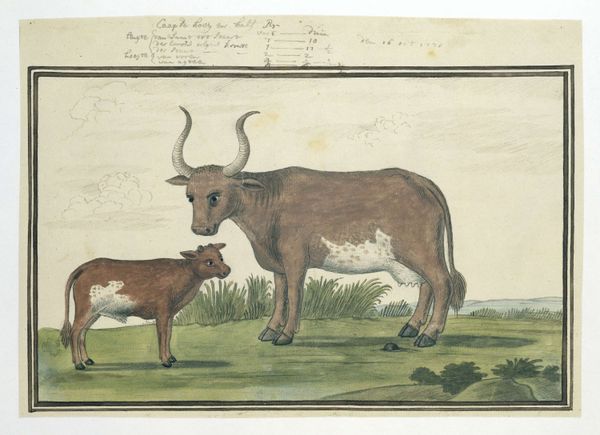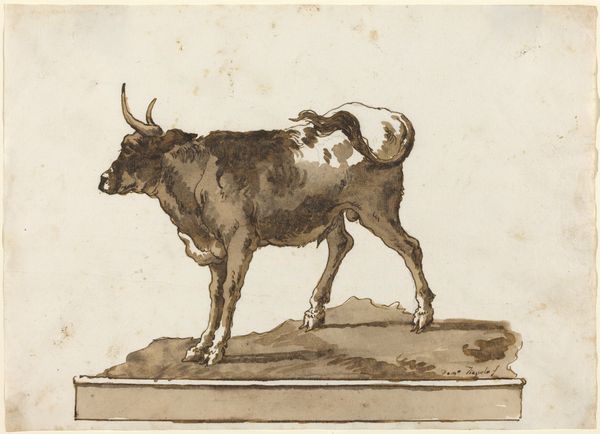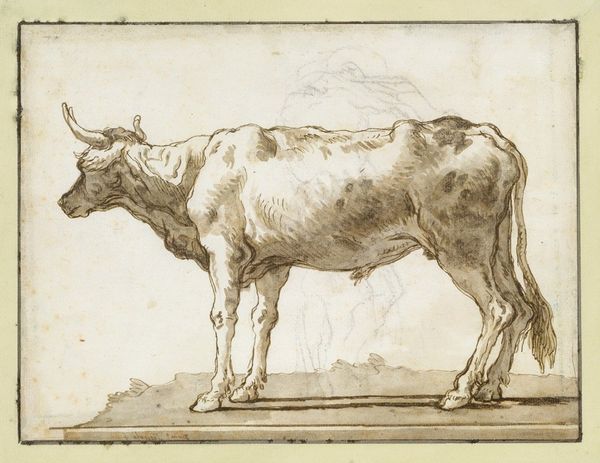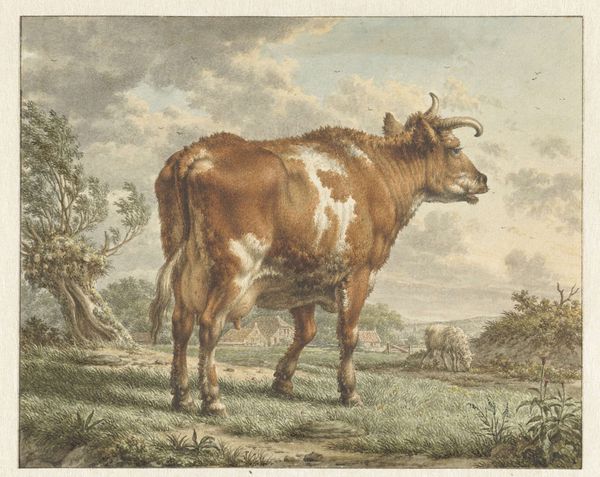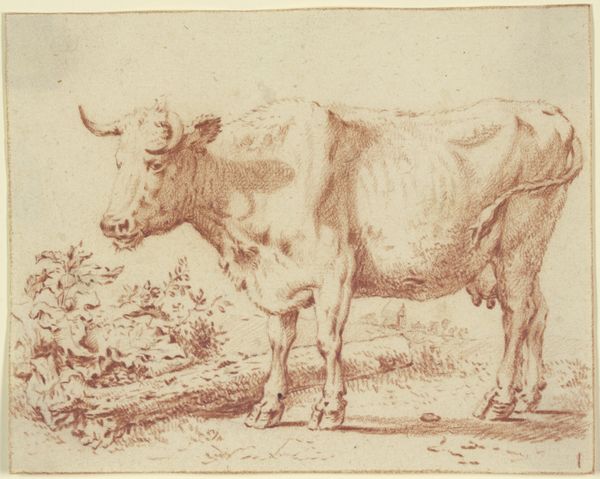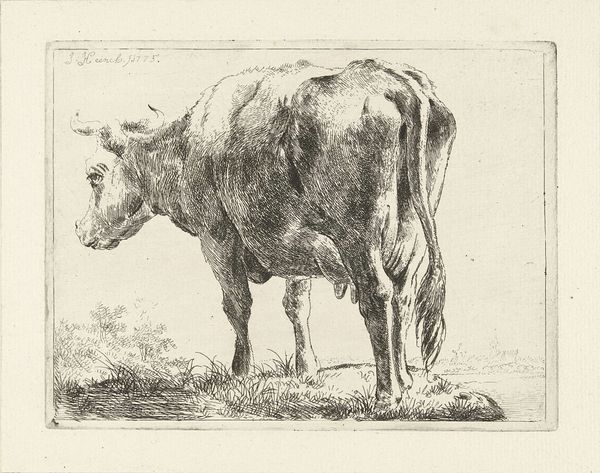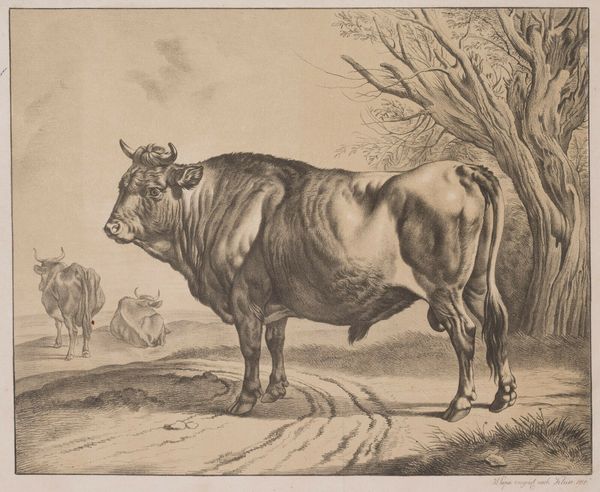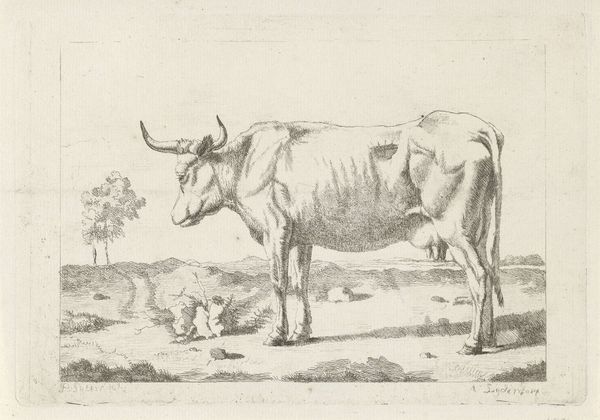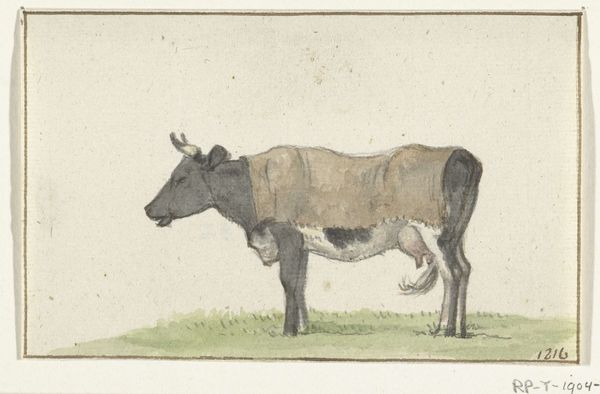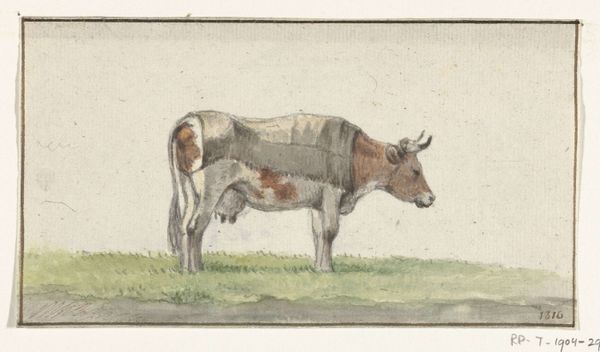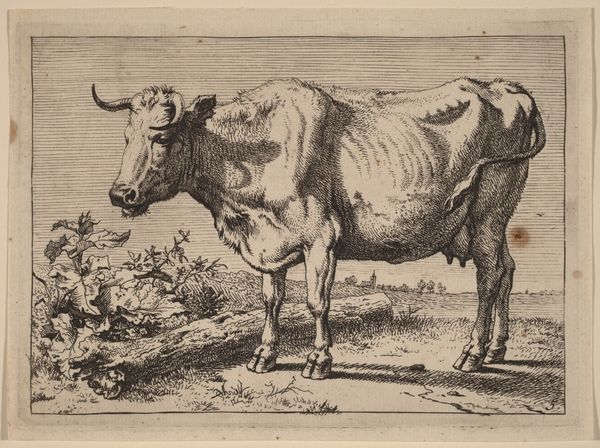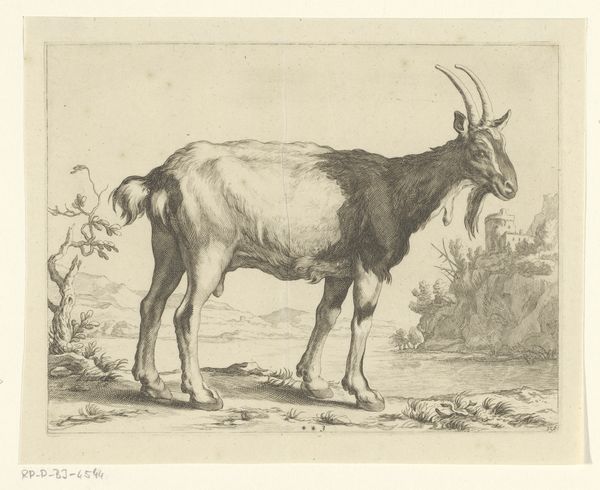
drawing, coloured-pencil, watercolor
#
drawing
#
coloured-pencil
#
water colours
#
landscape
#
watercolor
#
coloured pencil
#
watercolor
#
realism
Dimensions: height 660 mm, width 480 mm, height 250 mm, width 343 mm, height 203 mm, width 311 mm
Copyright: Rijks Museum: Open Domain
Curator: So, we have here a drawing attributed to Robert Jacob Gordon, titled "Bos taurus: Namaqua Ox or 'nomgo,'" likely created around 1778. It's rendered in watercolor and colored pencil. Editor: My first thought? Majestic! It feels like a portrait of a particularly proud bovine. It's also kind of funny how meticulously he’s drawn the… well, you know. There’s something endearingly honest about that. Curator: The 'honest' depiction aligns with Gordon's larger project. As a military officer and explorer for the Dutch East India Company, he documented the people, flora, and fauna of Southern Africa. This wasn't just detached observation, but a deeply colonial endeavor. Editor: True. Makes you wonder about the ox itself. Did it know it was being immortalized for… posterity? Or perhaps scientific cataloging? It’s staring so intently! I wonder if it knew the implications for his kind. Curator: Exactly. Consider how representation is itself a form of power. The very act of naming, classifying, and depicting—as Gordon does with "Bos taurus"—contributes to a system where Western knowledge becomes dominant, shaping how the Namaqua people and their environment were perceived, both then and now. Editor: So, it's not just a cute cow pic then. Though, look at the detail in the coat pattern. It’s lovely! You almost forget for a second about the broader implications. Almost. Curator: Precisely. And it is a very handsome ox. But even the aesthetic appeal operates within a framework. The picturesque landscape, the ‘realistic’ rendering—all reinforce European ideals of beauty and order, applied to a context that was often misrepresented. The drawing reflects colonial attitudes and reinforces existing power imbalances through a supposedly objective artistic process. Editor: I get it. So appreciating the skillful execution comes with a responsibility to acknowledge the historical baggage. To understand the full picture. It feels weirdly appropriate. Curator: Indeed. And by grappling with those tensions, we enrich our understanding, not only of the artwork, but of the complex social forces at play when it was created and even today. Editor: Well, I’ll definitely be chewing on that. This seemingly simple ox drawing sure gives you a lot to moo over, huh?
Comments
No comments
Be the first to comment and join the conversation on the ultimate creative platform.
